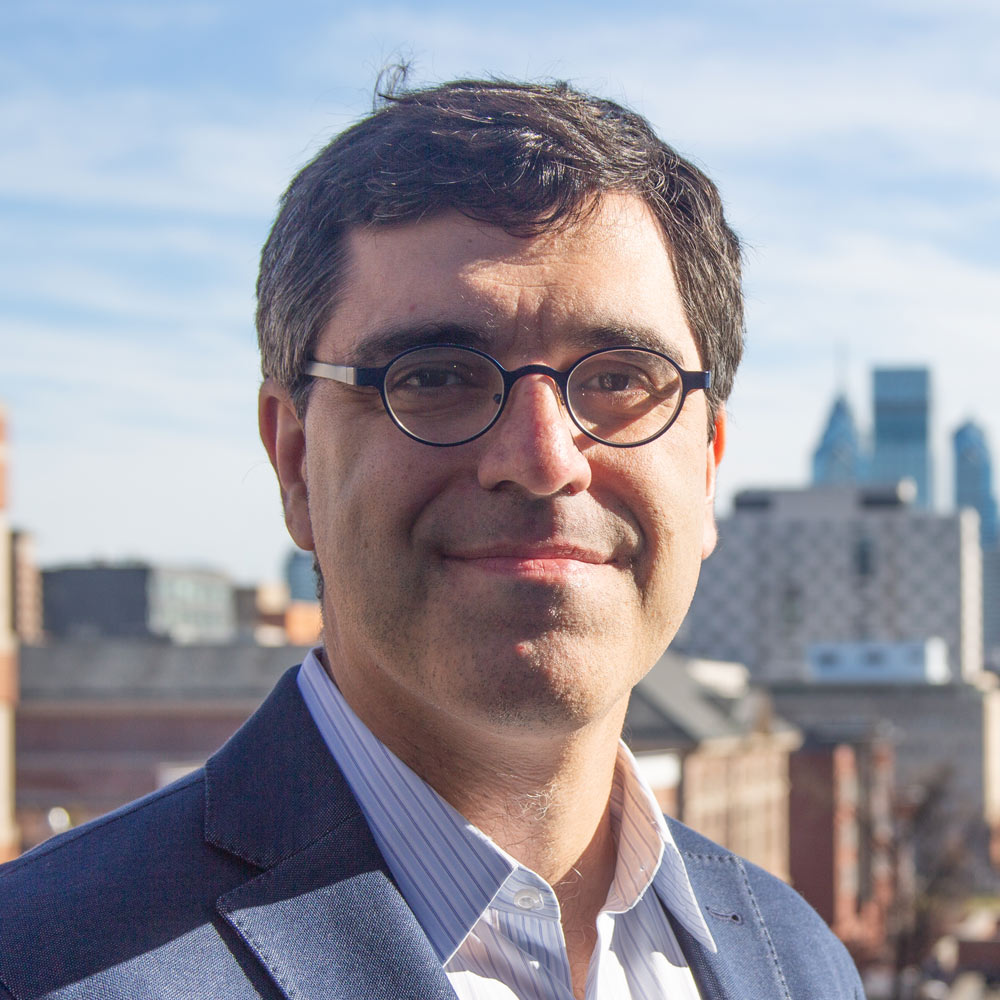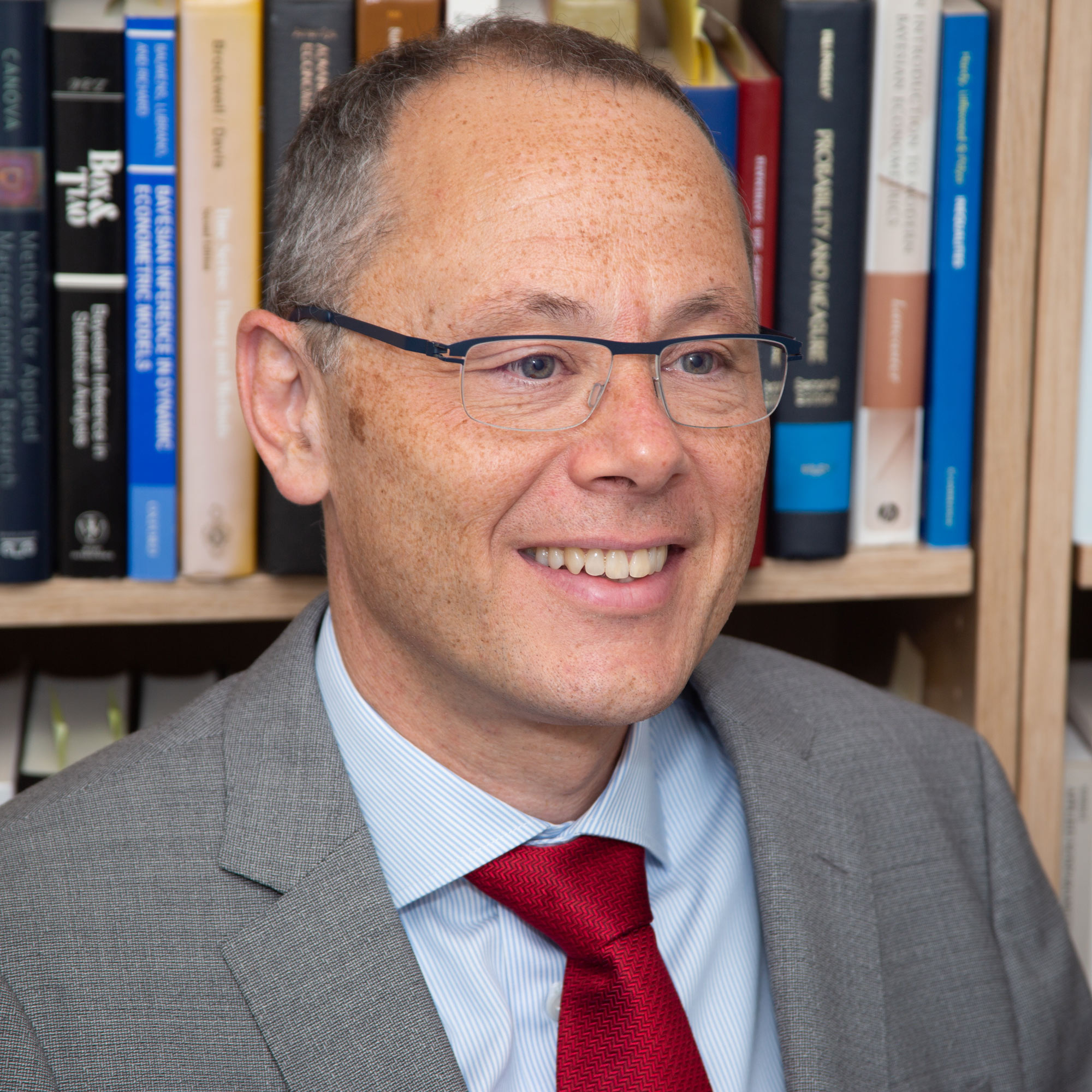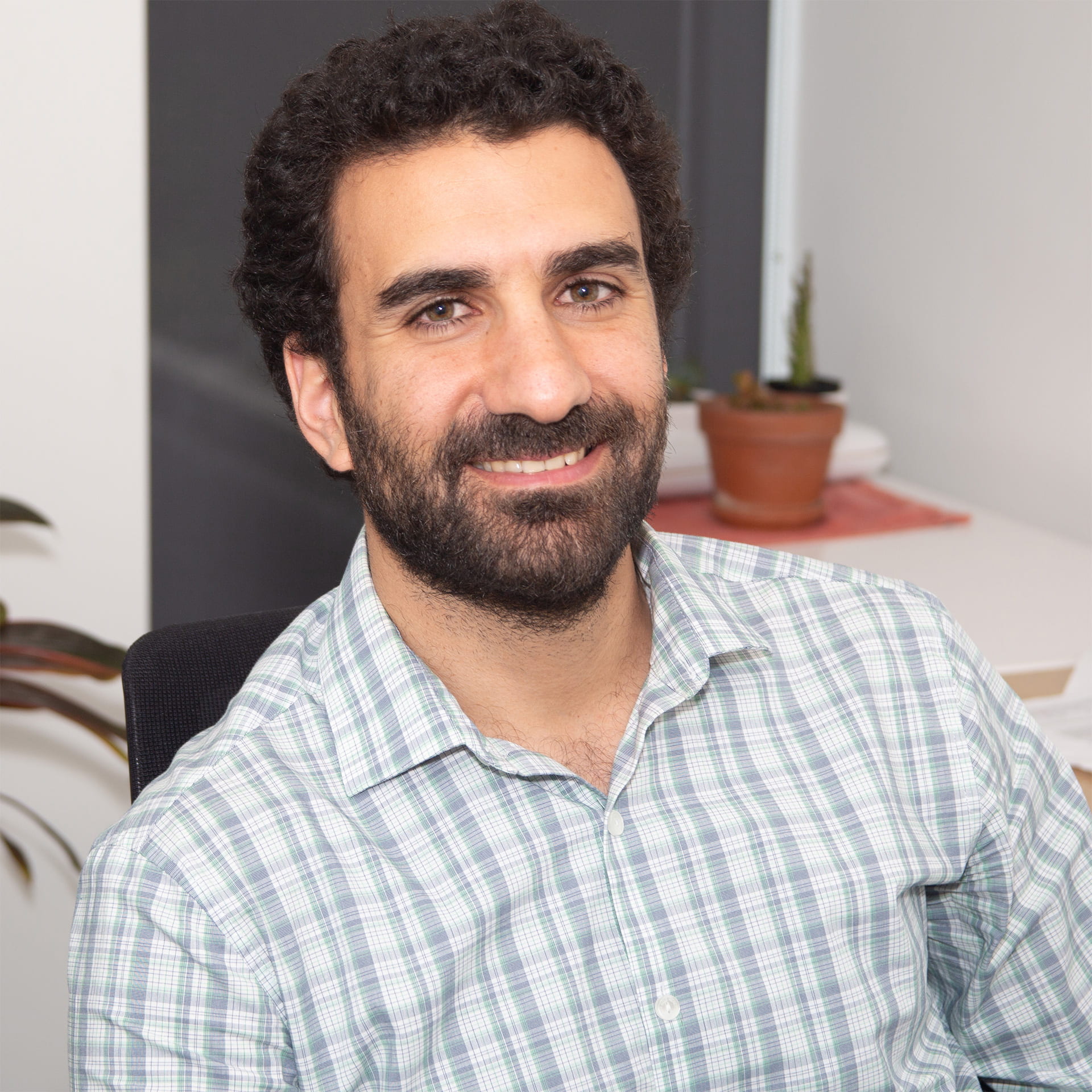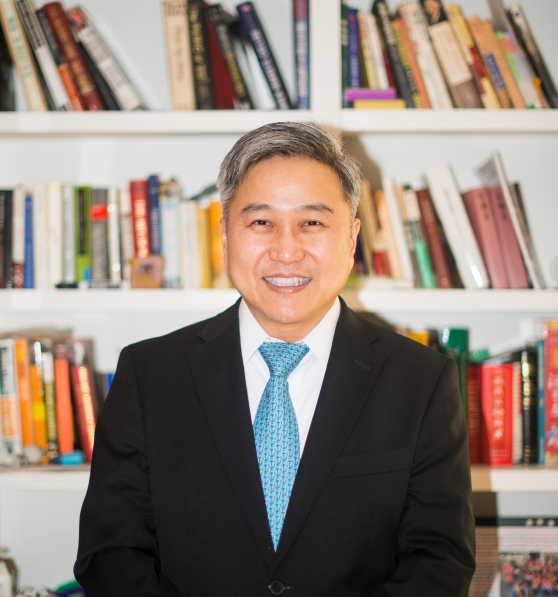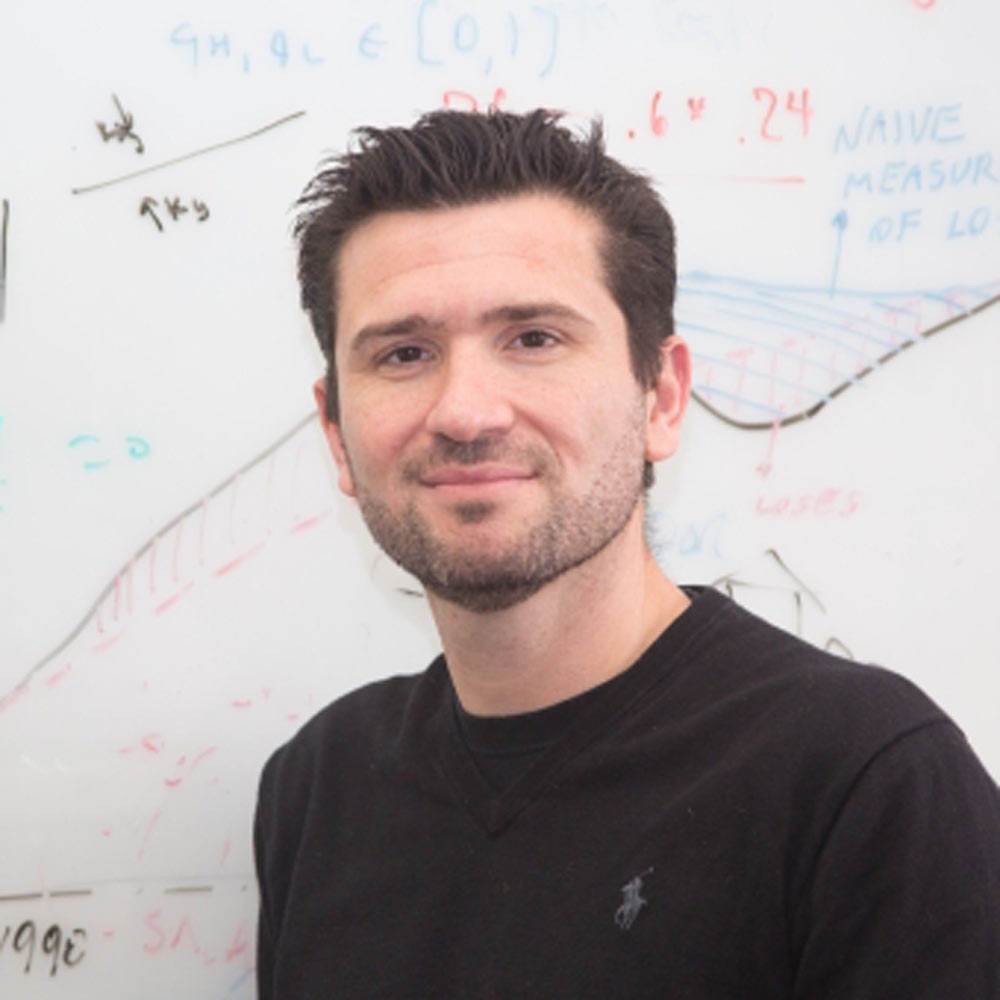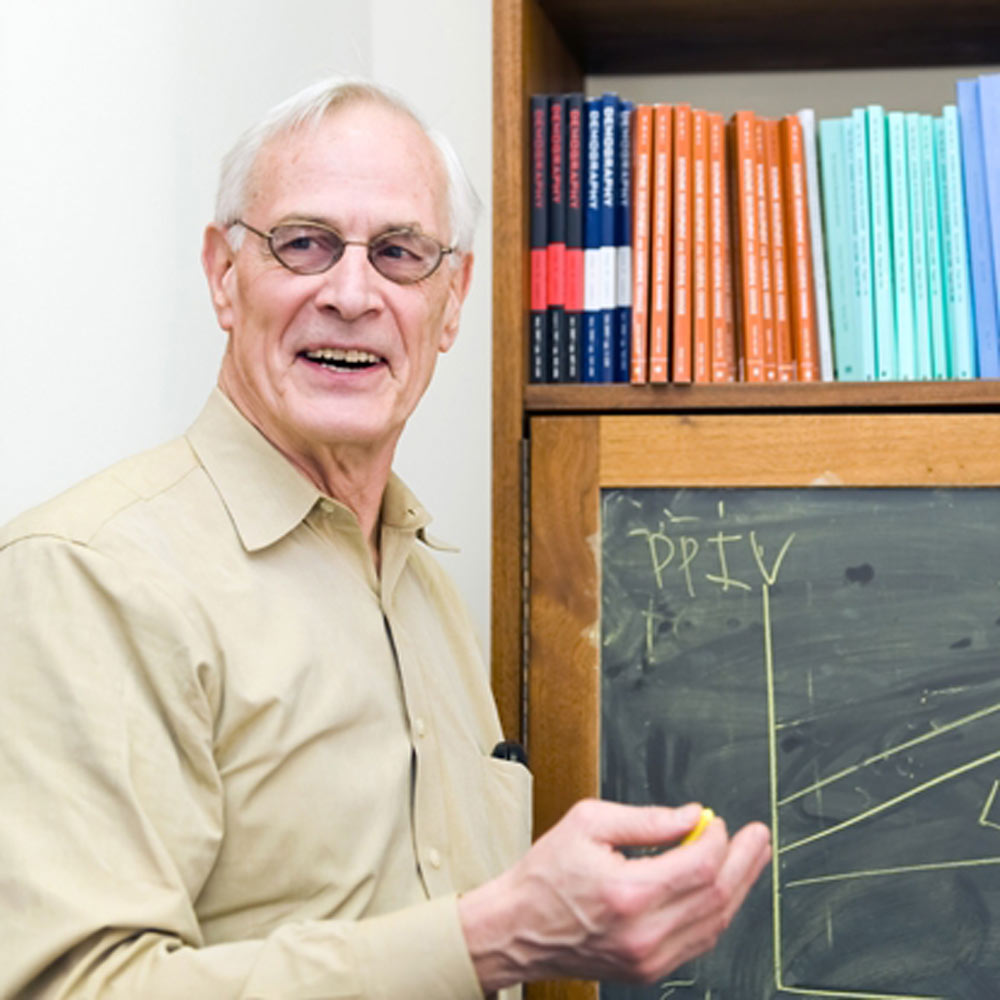Viral Analysis
The Department of Economics dedicates new online space to cutting-edge pandemic research.
The COVID-19 pandemic has had far-reaching effects on all aspects of society. With an eye toward examining these myriad angles, the Department of Economics has assembled a wide range of research covering topics from how lockdowns affect non-COVID visits to the emergency room to the long-term effects of social and economic distancing. The repository for these projects is the content-rich Penn Institute for Economic Research (PIER) web site.
“We’re working on putting all our energy into examining the pandemic from our different points of view,” says José-Víctor Ríos-Rull, Lawrence R. Klein Professor of Economics, who is taking over the directorship of PIER this summer. “The research, which is all put together within the Department of Economics at Penn, includes measurement, policy, long-run effects, and many other related issues.”
Ríos-Rull takes over from Enrique G. Mendoza, Presidential Professor of Economics, whose six-year term as PIER director concludes in July. The two worked jointly in setting up the PIER COVID-19 website.
Forecasting the Pandemic
One of the most salient avenues of research in regards to the pandemic is forecasting—predicting how a reoccurrence, whether it’s a month, or a year down the road, might look. In their paper, “Estimating and Simulating a SIRD Model of COVID-19 for Many Countries, States, and Cities,” Jesús Fernández-Villaverde, Professor of Economics, and co-author Charles I. Jones of Stanford University, are using data on deaths in New York City and various other U.S. states and countries around the world to estimate a standard epidemiological model of COVID-19. “We allow for a time-varying contact rate in order to capture behavioral and policy-induced changes associated with social distancing,” says Fernández-Villaverde.
The researchers simulate the model forward to consider possible futures for various locations, including the potential impact of herd immunity on reopening. “Our main innovation—beyond doing this for many areas that have been less studied in detail, such as Philadelphia—is that we derived a unique approach to measure the effects of social distancing in the rate of progression of the epidemic. Thus, we can forecast future outcomes and analyze different policies more reliably than with traditional methods,” continues Fernández-Villaverde.
In related, but not fully completed, work, Fernández-Villaverde and Jones are working to estimate how effective a vaccine would need to be to control the epidemic.
Another forecasting project sees Frank Schorfheide, Professor of Economics, and co-authors Laura Liuof Indiana University and Hyungsik Roger Moon at the University of Southern California adapting forecasting techniques, which they had previously developed for economic and financial panel data, to predict the smoothed daily number (which involves using an algorithm to remove noise from a data set) of active COVID-19 infections for a cross-section of approximately 100 countries and regions.
Schorfheide and his co-authors focus on interval rather than point forecasts, meaning that the model produces upper and lower bounds that are designed to cover the actual infections with a pre-specified probability of around 80 percent.
“In our view, it is very important to communicate ranges rather than specific numbers, because there is a lot of uncertainty about future infections,” says Schorfheide. “Only time can tell how accurate our forecasts are in comparison to other forecasting models. For this reason, we are publishing weekly updates and a comparison of forecasts and actuals on a webpage that is accessible through a link on the PIER website.”
The Economic Fallout
With so many out of work, and with consumer habits having changed so dramatically, what does a post-pandemic economy look like? Dirk Krueger, Walter H. and Leonore C. Annenberg Professor in the Social Sciences, and José-Víctor Ríos-Rull, Lawrence R. Klein Professor of Economics, are examining the differential impact of the pandemic on young versus old, and first-line versus second-line workers, with their paper, “Health versus Wealth: On the Distributional Effects of Controlling a Pandemic.” Their co-authors are Andrew Glover of the Federal Reserve Bank of Kansas City, and Jonathan Heathcote of the Federal Reserve Bank of Minneapolis and the Center for Economic and Policy Research.
The collaborators built a model in which economic activity and disease progression are jointly determined. “Our research looks at the optimal economic mitigation policy of a utilitarian government that can redistribute across individuals, but where such redistribution is costly,” says Ríos-Rull. “We show that optimal redistribution and mitigation policies interact and reflect a compromise between the strongly diverging preferred policy paths of different subgroups of the population. It's an explicit outcome of the choices of how much economic activity to engage in.”
Measuring the Spread
Some of the most insightful findings coming out of an examination of the pandemic are how it is affecting everyday life for citizens, and healthcare is at the core of this. In their paper, “Where Are the Missing Emergencies? Lockdown and Health Risk During the Pandemic,” Juan Pablo Atal, Assistant Professor of Economics, along with Jorge Alé-Chilet of Bar-Ilan University and Patricio Domínguez of Inter-American Development Bank, examine the unprecedented drop in non-COVID-19 related visits to the Emergency Room (ER). Using data gathered in Chile, they found that much of it can be attributed to the lower mobility of people due to the various states of lockdown.
“We study the potential causes for this decrease using data on emergency visits and Google mobility data,” say the authors in their paper. “Our goal is to quantify the extent to which the crisis-induced changes in mobility patterns can explain the drop in non-respiratory emergency room visits, vis-à-vis other causes. For instance, the fact that people are unwilling to go to the ER out of the fear of contracting the novel SARS-CoV-2 virus at the hospital.”
The results can answer whether the drop in ER use will have negative consequences for health or, instead, reflects an unexpected benefit from lower mobility, as it helps free up healthcare resources to confront the pandemic.
Hanming Fang, Class of 1965 Term Professor of Economics, along with co-authors Long Wang of Shanghai Tech University and Yang Yang of the Chinese University of Hong Kong, is examining lockdown impacts as well—those put in place in China. In their paper, “Human Mobility Restrictions and the Spread of the Novel Coronavirus (2019-nCoV) in China,” the researchers quantify the causal impact of human mobility restrictions, particularly the lockdown of the city of Wuhan.
Fang and his collaborators found that the lockdown reduced inflow into Wuhan by 76.64 percent, outflows from Wuhan by 56.35 percent, and within Wuhan, movements by 54.15 percent, thus significantly reducing the total infection cases outside of Wuhan, even with the social distancing measures later imposed by other cities. They also found that there were substantial undocumented infection cases in the early days of the outbreak in Wuhan and other cities of Hubei province, but over time, the gap between the officially reported cases and estimated “actual” cases narrowed significantly.
In “Macroeconomic Dynamics and Reallocation in an Epidemic,” co-authors Dirk Krueger, Harald Uhlig at the University of Chicago, and Taojun Xie at the National University of Singapore examine a scenario where the government does not respond to the crisis, but private citizens optimally reallocate their consumption into economic activities less prone to infection. They argue that endogenous shifts in private consumption behavior across sectors of the economy can act as a potent mitigation mechanism during an epidemic or when the economy is reopened after a temporary lockdown.
Krueger and his collaborators found that this “Swedish solution” which allows the epidemic to play out without government intervention, and free agency for citizens to shift their sectoral behavior on their own, can lead to a substantial mitigation of the economic and human costs of the COVID-19 crisis. For different parameter configurations that capture the additional social distancing and hygiene activities individuals might engage in voluntarily, they show that infections may decline entirely on their own, simply due to the individually rational re-allocation of economic activity, and that the curve of new infections not only just flattens, it gets reversed.
Long-Term Effects
One of the most critical questions is: what consequences will society face post-pandemic, and what will recovery look like? In “Social and Economic Distancing,” Guillermo Ordoñez, Associate Professor of Economics, and Selman Erol of Carnegie Mellon University, examine how social distancing is creating a new network of social relations with ramifications on growth and inequality.
The co-authors were motivated by the fact that the COVID-19 pandemic has highlighted the effectiveness of social distancing practices, voluntary and mandated, to reduce disease transmission in the presence of highly contagious infections. “Even though COVID-19 has a relatively low fatality rate, slowing down the rate of transmission is critical to avoid overwhelming the health system,” says Ordoñez.
At the same time, the researchers found that the same social distancing that is so effective in preventing contagion and deaths is, at least in principle, insidious for economic activity. It usually implies economic distancing, as well, since many industries require workers to collaborate shoulder-to-shoulder to produce goods.
Ordoñez and his collaborators propose a network model in which individuals choose whom to connect to, socially and economically, and how to connect, whether in-person or at-distance. They also characterize how shocks to the cost of in-person activities (the probability of getting infected) change the network of social and economic interactions.
“Policymakers should weigh subsidizing new technologies and reopening activities where the mapping between social and economic distancing is weak, or where such mapping has shown more flexibility,” says Ordoñez.” The economy has demonstrated its creative capability to maintain operations without relying on in-person activities.”
In another project examining long-term effect, titled "Free and Perfectly Safe but Only Partially Effective Vaccines Can Harm Everyone," Rakesh Vohra, George A. Weiss and Lydia Bravo Weiss University Professor, and Eduard Talamàs of the IESE Business School in Barcelona, look at how risk compensation can undermine the ability of partially effective vaccines to curb epidemics.
In the paper, which was published in the journal, “Games and Economic Behavior,” Vohra and his collaborators contend that vaccinated citizens may choose to engage in more risky interactions and, as a result, may increase everyone’s infection probability. This is in contrast to the prediction of standard models, where free and perfectly safe—but only partially effective—vaccines can reduce everyone’s welfare, and hence fail to satisfy the fundamental principle of “first, do no harm.”
Other research includes the addition of COVID-19 telephone surveys to a variety of international projects led by Jere Behrman, William R. Kenan Jr. Professor of Economics. In addition, Hanming Fang is also studying optimal lockdown and reopening policies. He is also looking at how politics affects the mitigation policies chosen across counties and the evolution of labor markets in China both during and after the outbreak.
To learn more about the department’s initiatives, visit the COVID-19 section of the PIER website.

